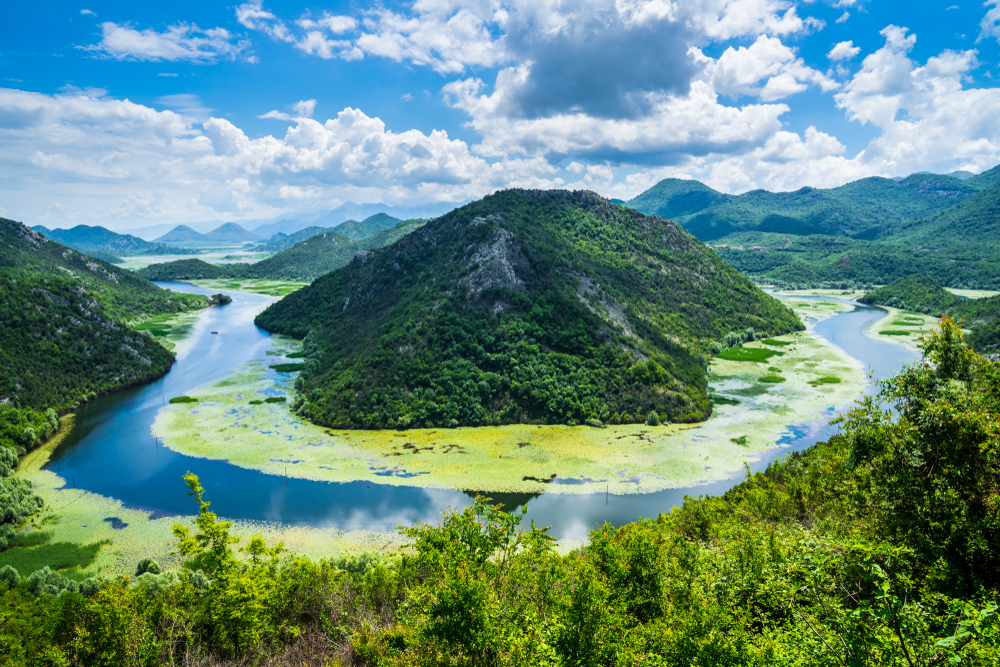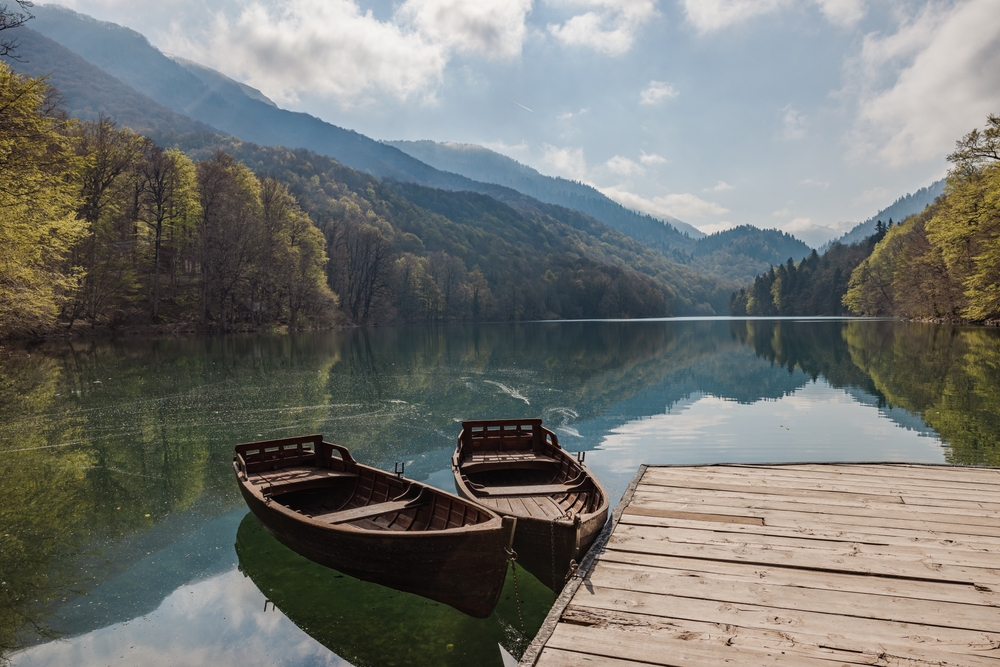Skadar Lake Overview
Skadar Lake National Park, or Nacionalni park Skadarsko jezero in Montenegrin, is a stunning protected area in southeastern Montenegro. Covering approximately 154 square miles (400 square kilometers), this park is centered around Lake Skadar, the largest lake in the Balkans, which straddles the borders of Montenegro and Albania.
Nestled within the Dinaric Alps, the park is a dynamic mosaic of wetlands, open water, and karst terrain, providing a haven for biodiversity and natural beauty. The park’s terrain is dominated by the expansive waters of Lake Skadar, dotted with small islands known locally as “gromadas,” which often host ancient monasteries or historic fortifications.
The surrounding landscape features rolling hills, rocky limestone cliffs, and lush meadows that shift colors with the seasons. Key features include the Morača and Rijeka Crnojevića rivers, which feed the lake, and the surrounding peaks like Rumija Mountain, providing a dramatic backdrop to the serene waters. The wetlands surrounding the lake are particularly rich in vegetation, including reeds, water lilies, and willow trees, creating a vibrant and life-filled ecosystem.
Skadar Lake National Park is renowned for its incredible diversity of wildlife, making it a paradise for nature enthusiasts and bird watchers. It is one of Europe’s most important bird habitats, home to over 280 bird species. Highlights include the Dalmatian pelican, the pygmy cormorant, and a variety of herons and egrets.
The lake also supports numerous fish species, including carp and bleak, and its waters teem with life during the warmer months. On land, mammals like otters, foxes, and wild boars roam the park, while its karst terrain provides shelter for reptiles and amphibians, further enriching the area’s ecological diversity.
Visitors are drawn to the park not only for its natural beauty but also for its cultural and historical significance. The island monasteries, such as those on Beška and Moračnik islands, showcase medieval architecture and provide a glimpse into the region’s spiritual heritage.
Ruins of fortresses like Grmožur Island, once a prison, add a layer of intrigue. The quaint fishing villages along the lake, such as Virpazar and Rijeka Crnojevića, offer an authentic taste of local life, complete with traditional cuisine and boat tours.
Exploring the park can be done in several ways, from serene boat rides and kayaking on the lake to hiking and cycling along the well-marked trails that crisscross the area. Birdwatching tours are particularly popular, with experts guiding visitors to the best spots for observing rare species. Fishing, swimming, and even wine tasting at nearby vineyards also offer unique experiences for visitors.
Despite its many attractions, Skadar Lake National Park faces challenges, including pollution from nearby urban areas and illegal construction along the lake’s shores. However, conservation efforts led by local and international organizations have yielded successes, such as the protection of critical bird habitats and increased awareness of the park’s ecological significance. Continued efforts are essential to preserve this extraordinary natural treasure for future generations.














































































